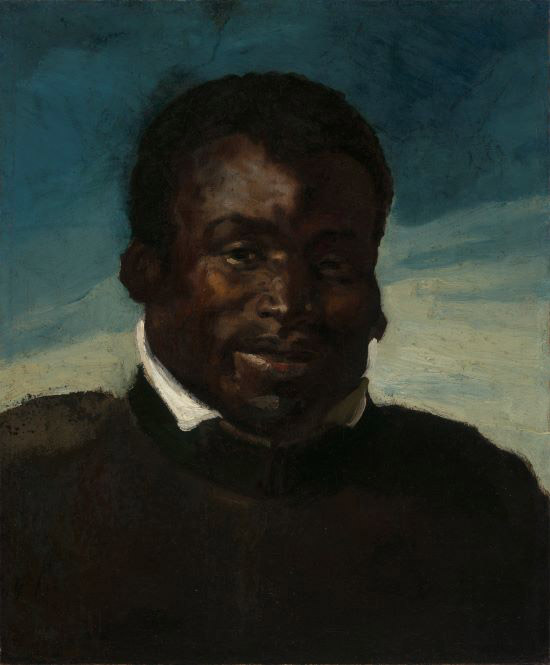

Portrait of an African Man, 1819, Théodore Géricault (French, 1791–1824), oil on canvas. Adolph D. and Wilkins C. Williams Fund by exchange, Gift of the Estate of John E. Stone in memory of Nell C. (N
The Virginia Museum of Fine Arts recently acquiredPortrait of an African Man, a painting by French artist Théodore Géricault (1791–1824).
“We are very excited to have this exemplary painting by Géricault — the masterful artist behind some of the most recognized works from early 19th-century French art — in the Virginia Museum of Fine Arts’ collection,” said Alex Nyerges, VMFA’s Director and CEO. “Géricault’s interest in the human condition, expressed in paintings like 'Portrait of an African Man,' influenced artists who came after him and demonstrated how the socio-political tide was turning in France.”
A renowned pioneer of the Romantic painting movement in France, Géricault broke from the Neoclassical approach by representing the tensions arising from social, racial and political inequalities in early 19th-century France. His paintings and lithographs evolved to shed light on the marginalized, the oppressed and the mentally ill.
Scholars believe that VMFA’s recent acquisition, "Portrait of an African Man," 1819, is a study Géricault made to capture the model’s specific appearance for later portrayal in the background of the artist’s epic painting "The Raft of the Medusa." Painted that same year, "The Raft of the Medusa" documents a catastrophic shipwreck that occurred when France sought to colonize Senegal in 1816. Only 15 of the more than 140 people originally on board survived after 13 harrowing days stranded at sea, abandoned by their senior officers and left to die. Though this same model appears to be included in a group of men in the background of the seminal painting, "The Raft of the Medusa," now at the Louvre in Paris, France, Géricault’s"Portrait of an African Man" is a forceful image in its own right.
“We often forget that 'The Raft of the Medusa'is one of the first works to have truly established the artist as someone having a public responsibility and art as a kind of protest invested in denouncing injustice,” said Dr. Sylvain Cordier, Paul Mellon curator and head of the department of European art. “Géricault was an artist who put his creativity at the service of a cause and wanted to inspire his fellow citizens not to accept the unacceptable. In France, where I grew up, children at school hear about this masterpiece in the Louvre that illustrates the fight for social justice and the right to equality for all people. Acquiring such an important work, one that was part of the process of composing this landmark painting, is really an extraordinary moment for VMFA.”
"Portrait of an African Man" focuses on the face and shoulders of the man. Set against a leaden gray-blue sky, his head is shaped by the muted break in the clouds. His bright chalky white shirt collar peeks out of the round standing collar of his dark overcoat, perhaps a military coat as a brushy swath of warm gray paint hints at an epaulet on his right shoulder and trim running from beneath the collar down the center placket of the jacket. “Géricault portrays the African man as an identifiable and relatable human being,” said Dr. Michael Taylor, VMFA’s chief curator and deputy director for art and education. “This was a considerably modern approach for the context in which the artist lived, and nearly 30 years before the official end of slavery in France in 1848.”
“Injustice, and particularly the inhumanity of enslavement, disturbed and disgusted Géricault deeply,” said Cordier. “He was passionately engaged with transforming the way African people figured in the European art of his time, when racial stereotypes were highly visible in representations of enslaved people and when Black subjects were most often excluded from representation entirely. The final project he conceived of was another large-scale history painting that would illustrate the horrors of the slave trade. Sadly, this work was left unrealized because of Géricault’s untimely death. In our painting, the character represented is not a servant or some kind of foreign person fetishized as being exotic. He is a social acquaintance, maybe a friend of the painter, seen and represented in a spirit of friendship in any case.”
"Portrait of an African Man"is on view at the Virginia Museum of Fine Arts. For more information about VMFA’s permanent collection of more than 50,000 works of art, visit www.VMFA.museum.